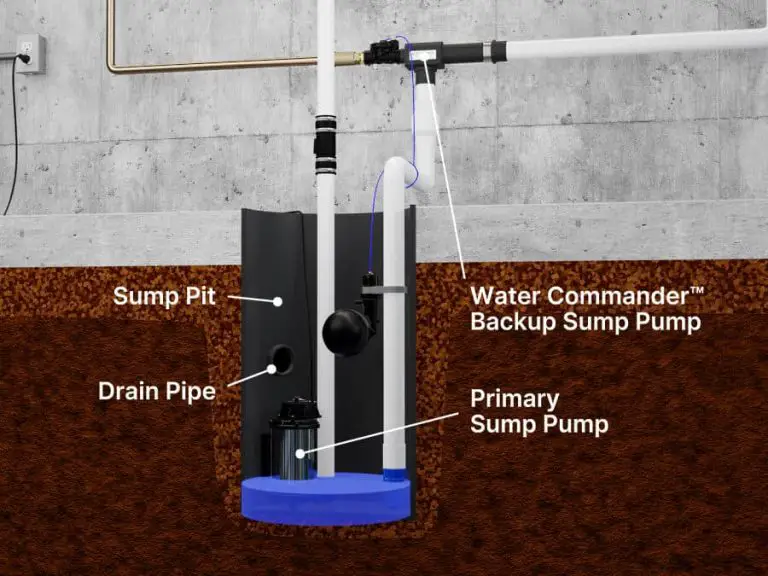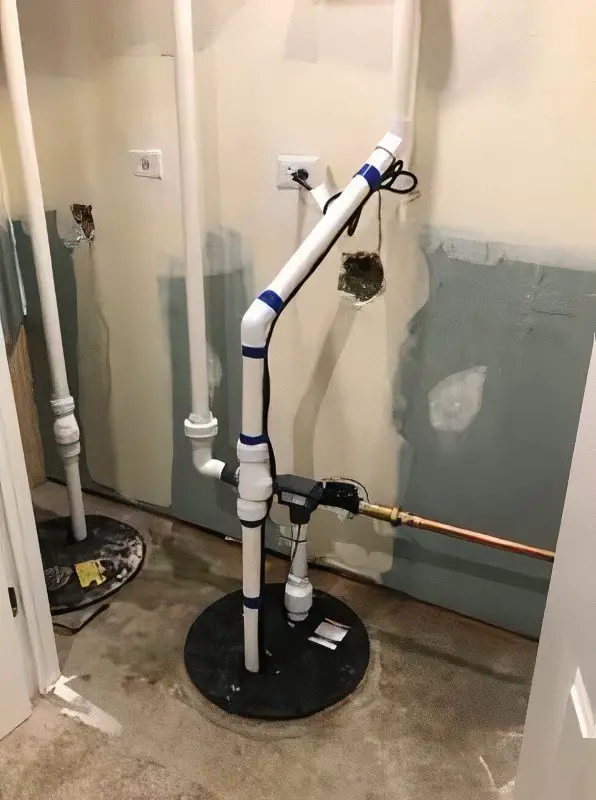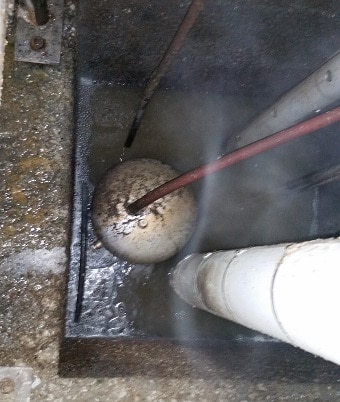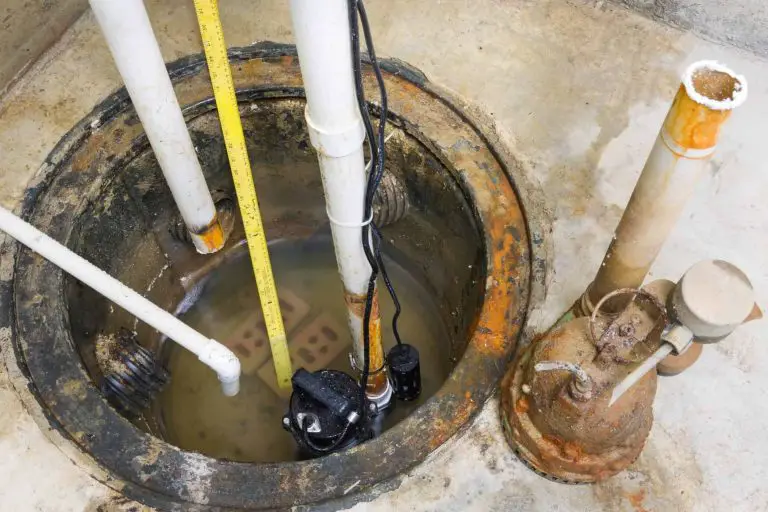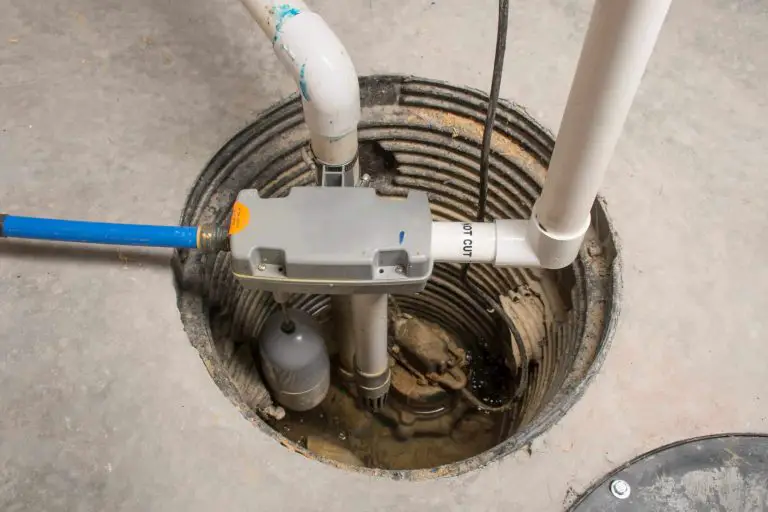Can a Sump Pump Discharge Pipe Empty Underground
When most people think of a sump pump, they imagine the pit in their basement that collects water and pumps it out to keep the area dry. But did you know that a sump pump discharge pipe can also empty underground? This is especially useful if you have a garden or other outdoor areas that tend to flood.
By connecting your sump pump to an underground drainage system, you can prevent water from pooling on your property and causing damage. A sump pump is a device that is installed in the lowest point of your home’s foundation.
Its job is to pump any water that has collected in the sump pit out of the house and away from the foundation to prevent flooding. Most sump pumps have a discharge pipe that runs from the pump to outside of the house where it empties the water.
But what happens if that pipe empties underground? There are a few things to consider when determining if your sump pump’s discharge pipe can empty underground. First, check with your local building code regulations to see if there are any restrictions on where you can discharge water from your home.
This is important because some codes may not allow for groundwater discharge due to potential contamination concerns. If there are no code restrictions, then you need to consider how deep underground you want to discharge the water.
The deeper you go, the more effort it will take for the pump to push the water out. This can shorten the life of your pump and potentially cause problems down the road.
It’s generally best to keep things shallow – aim for a depth of 3 feet or less if possible. Once you’ve determined that discharging your sump pump underground is feasible, you need to make sure you do it properly.
Dig a trench from your home’s foundation to where you want the pipe to end. The trench should be slightly wider than the pipe and at least 8 inches deep.
Line the trench with gravel before runningthe pipe through it so there is good drainage aroundthe pipe. Backfill dirt aroundthe pipe being careful notto collapse the sidesof the trenchin on topof it. You don’twantyour newdischarge pipeto become partof an undergroundcave-in!
Sump Pump Discharge Line Failure and Fix
Underground Sump Pump Discharge
If you have a sump pump in your basement, chances are it is discharging water into an underground pipe that runs away from your house. This is called an underground sump pump discharge, and it is a very effective way to keep your basement dry.
However, there are a few things you should know about underground sump pump discharge before you install one. First of all, make sure that the pipe you use for discharge is made of PVC or other durable material that will not corrode over time.
Also, the pipe should be sloped so that water will flow away from your home and not back towards it. You will also need to consider where the water will go once it leaves your property.
Make sure that it does not run onto your neighbor’s property or into a storm drain where it can cause flooding. The best place for discharged water is usually a dry well or a pit that has been dug specifically for this purpose.
Finally, be sure to check with your local code enforcement office to see if there are any regulations regarding underground sump pump discharge in your area. There may be some restrictions on how much water can be discharged and where it can go. Following these guidelines will help ensure that your basement stays dry and free of any unwanted moisture.
Sump Pump Discharge Pipe Outside
If you have a sump pump in your home, it’s important to make sure that the discharge pipe is routed outside. This will ensure that any water that is pumped out of the sump pit is discharged away from your home, preventing flooding and water damage.
There are a few things to keep in mind when routing your sump pump discharge pipe outside. First, make sure that the pipe is properly sized for your sump pump.
A 1/2″ diameter pipe is typically sufficient for most residential sump pumps. Second, the discharge pipe should be pitched so that it slopes away from the house; this will help ensure that any water that does enter the pipe will flow out and away from the foundation.
Finally, be sure to install a check valve in the discharge line; this will prevent water from flowing back into the pit and causing problems with your pump. following these simple tips will help keep your home safe from flooding and water damage due to your sump pump. If you have any questions about routing your discharge pipe, or if you need assistance installing a check valve, please contact a licensed plumber in your area for assistance.
Sump Pump Discharge Line Underground Clogged
If your sump pump discharge line is underground and clogged, you may be wondering how to clear the blockage. There are a few different methods you can try, depending on the severity of the clog.
One option is to use a garden hose to flush out the line. Start by disconnecting the hose from the spigot and attaching it to the end of the discharge pipe.
Turn on the water and let it run for a few minutes to see if this clears the clog. If not, you can try running a small snake or auger through the pipe to break up any stubborn blockages.
Another option is to call in a professional plumber or drain cleaning service. They will have specialized equipment that can quickly clear any type of blockage in your sump pump discharge line. This is usually the best option if you have a severe clog that cannot be cleared with simple DIY methods.
Where to Run Sump Pump Discharge
If you have a sump pump in your home, it’s important to know where to run the discharge. The most common place to run the discharge is into a drainage ditch or storm sewer.
However, there are some other options available. One option is to route the discharge into an existing downspout.
This can be done by attaching a flexible pipe to the bottom of the downspout and directing the water away from your foundation. Another option is to route the discharge into a dry well.
A dry well is simply a hole that you dig in your yard and fill with gravel. The water will seep into the ground, away from your foundation.
Finally, you could also route the discharge onto your lawn or garden area. This is not recommended if you live in an area with heavy rainfall, as it could cause flooding in your yard. If you do choose this option, make sure that the water is directed away from any structures on your property (including your house!).
Sump Pump Pvc Discharge Pipe
If your home is prone to flooding or has a wet basement, you may be considering installing a sump pump. A sump pump is a Pump that is used to remove water that has accumulated in a water-collecting sump basin, typically found in the basement of homes.
The water is discharged through a PVC pipe, which carries it away from the house and drains it into an appropriate outlet. Installing a sump pump can be a relatively easy do-it-yourself project, but there are some important considerations to keep in mind. This article will provide detailed information about how to install a sump pump with PVC discharge pipe, including information on sizing the pipe and selecting the right type of PVC for your application.
Sump Pump Discharge Overflow
If your sump pump is constantly running, or if you notice water overflowing from the discharge pipe, there could be a problem with your sump pump. Discharge overflow can occur for a variety of reasons, including: • A clogged or frozen discharge pipe • A faulty check valve • An impeller that’s not functioning properly • Too much water in the sump pit If you suspect that your sump pump is causing a discharge overflow, it’s important to take action quickly.
Otherwise, you could end up with serious flooding in your home. Here are some tips for troubleshooting a sump pump discharge overflow: 1.
Check the discharge pipe: If the discharge pipe is clogged or frozen, water will back up into the sump pit and cause an overflow. To clear a clog, remove the hose from the fitting and flush it out with a garden hose.
If the pipe is frozen, thaw it out with hot water or a hair dryer. 2.
Inspect the check valve: The check valve prevents water from flowing back into the sump pit when the pump isn’t running. If it’s defective, water will leak through and cause an overflow.
Replace any damaged or missing parts on the check valve. 3.
Clean or replace the impeller: The impeller helps move water through the pump and out of the pit. If it’s dirty or broken, it won’t work properly and could cause an overflow.
Clean off any debris that’s blocking the blades ofthe impeller, or replace it if it’s damaged beyond repair. 4 .
Extend Sump Pump Discharge Pipe
Assuming you would like a blog post discussing how to extend a sump pump discharge pipe: A sump pump is a vital component of any home that experiences regular flooding or water accumulation. The sump pump’s job is to remove water from the area around the foundation of your home and keep it from causing structural damage.
Sump pumps are usually installed in basements, but can also be found in crawl spaces or outside the home. If you find that your current sump pump discharge pipe is not long enough to reach an adequate drainage area, you may need to extend it.
Doing so is not difficult, but there are a few things you need to keep in mind. First, make sure that you get all the proper materials and tools together before starting.
Second, take measurements carefully so that your extension will fit properly onto the existing pipe. And finally, use high-quality materials so that your extension will last for years to come.
Extending a sump pump discharge pipe is relatively simple as long as you have all the right materials and take accurate measurements. By following these tips, you can be sure that your extended pipe will do its job properly for years to come!

Credit: www.gothrasher.com
Can Sump Pump Drain Underground?
As long as your sump pump is draining water away from your home’s foundation, it can drain underground. In fact, many homeowners choose to have their sump pump discharge pipe drain into an underground drainage system because it’s out of sight and won’t affect the landscaping around their home. Just be sure that the underground drainage system you use can handle the volume of water your sump pump will be discharging.
Where Do I Drain My Sump Pump Discharge?
If your home has a sump pump, it’s important to know where the discharge pipe is located. The discharge pipe carries water away from your home and prevents flooding.
Most sump pumps are located in the basement or crawl space. The discharge pipe is usually connected to a drain or sewage system.
If you’re not sure where your sump pump is located, call a plumber or ask your neighbor for help. When draining your sump pump, be sure to follow all local building codes.
You may need to get a permit before you can drain your sump pump into the sewer system. In some areas, you may be required to have an air gap between the discharge pipe and the sewer connection.
An air gap prevents backed-up sewage from entering your home through the sump pump. To drain your sump pump, first turn off the power to the pump.
Then, disconnect the hose from the outlet on the side of the unit. Next, use a garden hose to slowly siphon water out of the unit until it’s empty.
Can a Sump Pump Empty into Sewer?
A sump pump is a device that is used to remove water that has accumulated in a sump pit. The water is typically removed from the pit and discharged to an area where it will not cause any damage or problems.
In some cases, the water may be discharged into a sewer system. Can a sump pump empty into sewer? It is possible for a sump pump to discharge into a sewer system, but it is not recommended.
There are several reasons why this is not considered to be the best option for disposing of the water from a sump pit. One reason why discharging into a sewer system is not recommended is because it can overload the sewers and cause them to back up.
When this happens, sewage can back up into homes and businesses, causing health hazards and property damage. Another reason why discharging into a sewer system is not recommended is because it can introduce pollutants into the sewers.
These pollutants can then end up in waterways, where they can adversely affect aquatic life and potentially contaminate drinking water supplies. If you do need to discharge your sump pump’s water into a sewer system, there are some things that you can do to minimize the risk of problems occurring.
One thing that you can do is install an check valve in the discharge line. This will help to prevent sewage from backing up into your home or business if there was ever an issue with the sewers becoming overloaded.
You should also make sure that you have your sump pump regularly serviced and inspected by a professional plumber or other qualified individual. This will help ensure that your sump pump is operating properly and isn’t introducing any pollutants into the sewers unintentionally.
Can You Bury a Sump Pump Discharge Hose?
You can bury a sump pump discharge hose, but it is not recommended. If you do bury the hose, make sure that it is at least 4 inches below the ground and that it has a sloped design so that water will drain properly. You should also wrap the hose in a wire mesh to keep animals from digging it up.
Conclusion
A sump pump is a device that is installed in the basement of a home. Its purpose is to remove water that has accumulated in the basement and discharge it outside of the home.
The problem with sump pumps is that they can empty underground if they are not installed properly. This can cause problems for the home’s foundation and lead to flooding.


